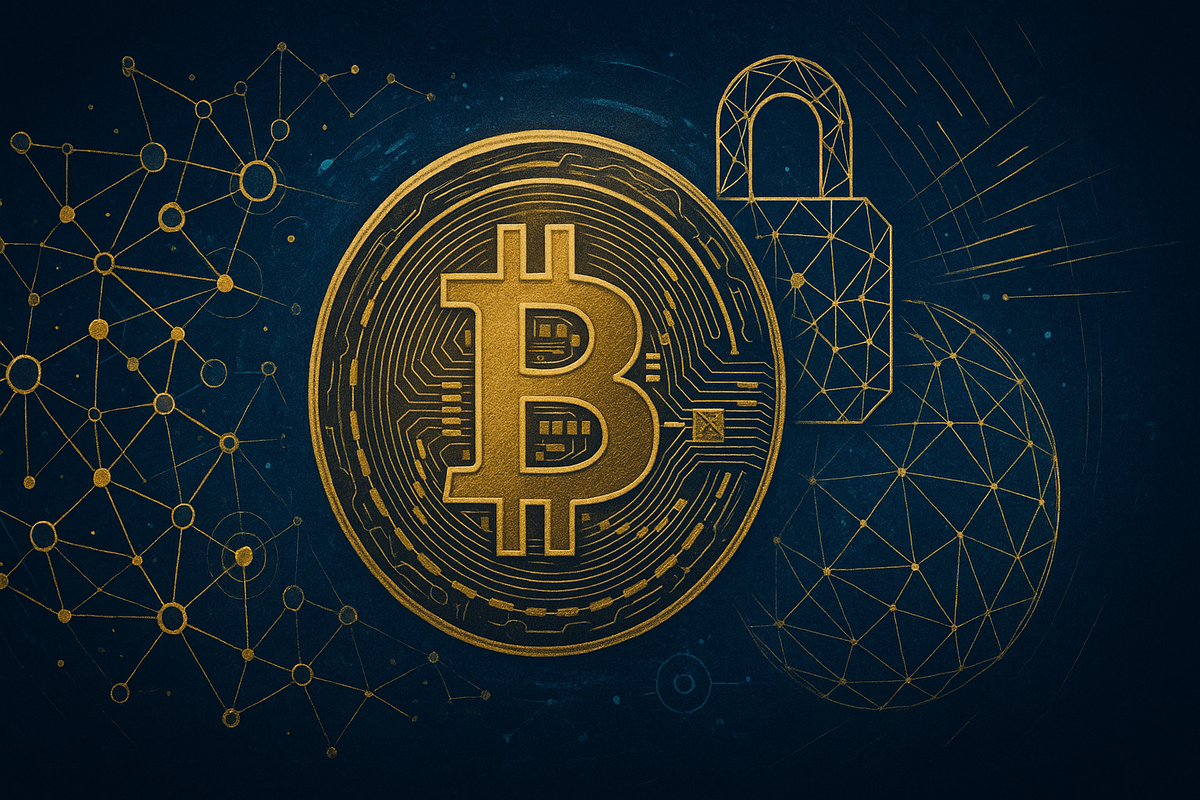Core vs Knots: Relay Policy, Consensus, and Practical Governance
The September 25, 2025 episode of THE Bitcoin Podcast features Michael Tidwell arguing that “Core vs Knots” is a relay-policy dispute rather than a consensus split.

- My 'briefing notes' summarize the content of podcast episodes; they do not reflect my own views.
- They contain (1) a summary of podcast content, (2) potential information gaps, and (3) some speculative views on wider Bitcoin implications.
- Pay attention to broadcast dates (I often summarize older episodes)
- Some episodes I summarize may be sponsored: don't trust, verify, if the information you are looking for is to be used for decision-making.
Summary
The September 25, 2025 episode of THE Bitcoin Podcast features Michael Tidwell arguing that “Core vs Knots” is a relay-policy dispute rather than a consensus split. Tidwell explains trade-offs between OP_RETURN and witness-based data, clarifies that a User-Activated Soft Fork (UASF) has never been executed, and evaluates miner centralization risks through incentive models. The discussion centers on how identity criteria, user incentives, and authenticity tools shape Bitcoin’s operational resilience and governance.
Take-Home Messages
- Policy vs Consensus: Relay policy is configurable surface area, while consensus rules define network identity.
- UASF as Deterrent: The mechanism has never been executed and should remain last-resort leverage with explicit triggers.
- Identity Criteria: Cumulative proof-of-work and node consensus can diverge, so institutions need predeclared decision rules.
- Data Embedding Trade-offs: OP_RETURN is prunable, but witness paths often cost less and shape fee dynamics and perceptions of bloat.
- Resilience by Incentives: Even high miner concentration is constrained by economics and user exit options.
Overview
Michael Tidwell separates node relay policy from consensus rules and warns that conflating them inflates conflict. He says consensus defines Bitcoin’s identity while policy toggles are operational choices. This framing keeps governance focused on rule safety and predictable operations.
He describes UASF as credible deterrence that has never been used in production. Tidwell argues any activation without preagreed triggers risks fragmentation and legal ambiguity. He favors clear thresholds, roles, and timelines if escalation is ever required.
On-chain data policy receives practical treatment. Tidwell notes OP_RETURN outputs are prunable yet less cost-efficient than embedding in witness data. He supports removing the OP_RETURN relay cap to reduce recurring controversy and align incentives.
Identity and communications risks round out the discussion. Tidwell points to AI-driven impersonation and centralized platforms as attack surfaces. He highlights Web-of-Trust experiments and off-internet relays such as Meshtastic to harden authenticity and continuity.
Stakeholder Perspectives
- Core maintainers: Protect the boundary between consensus rules and relay policy to avoid accidental rule shifts.
- Alternative client developers: Preserve latitude to tune policy while staying consensus-compatible across implementations.
- Miners and pools: Maximize revenue under incentives that limit durable censorship and encourage inclusion.
- Exchanges and wallet providers: Require predeclared identity criteria and playbooks for forks or UASF scenarios.
- Educators and security engineers: Explain prunability and fees clearly and deploy signed messages and Web-of-Trust for authenticity.
Implications and Future Outlook
Clear separation of policy and consensus reduces governance noise and improves legal and operational predictability. Documented boundaries and safer defaults cut the odds that routine debates trigger identity scares. This benefits institutions that depend on stable settlement and interoperability.
Treating UASF as contingent leverage requires explicit triggers, communications roles, and reversible paths. Preplanning preserves optionality while discouraging brinkmanship that confuses users and counterparties. The result is faster coordination if credible threats ever materialize.
Data-embedding choices will shape fee markets and narratives about bloat. Measuring OP_RETURN versus witness impacts supports evidence-based defaults across clients. Rising AI spoofing pressure makes signed messages, Web-of-Trust, and redundant relays necessary public goods.
Some Key Information Gaps
- What technical and social triggers would justify an actual UASF activation? Predefined thresholds and roles reduce coordination risk and policy uncertainty.
- Under what measurable conditions would mining centralization become economically durable? Identifying stability regimes guides contingency planning and user response.
- Which criteria should decide Bitcoin identity in a contested fork: cumulative work or node signaling? A principled framework preserves legal continuity and market confidence.
- What empirical evidence compares chain impact from OP_RETURN versus witness-based data embedding? Measurement clarifies fee dynamics, pruning effects, and sensible defaults.
- What practical Web-of-Trust designs can harden identity in Bitcoin-adjacent communications? Deployable patterns mitigate AI-driven impersonation and platform dependency.
Broader Implications for Bitcoin
Governance Clarity as Infrastructure Risk Control
Clear policy-consensus boundaries function like safety cases in critical infrastructure. Jurisdictions and firms that document decision thresholds will cut operational and legal risk during disputes. Over time, standardized playbooks could become de facto compliance artifacts for custodians and public entities.
Fork Identity and Market Continuity
Predeclared identity criteria will shape how courts, regulators, and index providers treat contested chains. If cumulative work and node consensus diverge, preset rules lower settlement risk and volatility. This discipline generalizes to other permissionless systems that face similar governance bifurcations.
Fee Markets and Data Hygiene
Evidence-based defaults on OP_RETURN and witness use will influence blockspace pricing and perceived chain health. Clear guidance reduces bloat narratives and improves capacity planning for services. These practices inform wider debates on encoding arbitrary data into shared ledgers.
Deterrence Frameworks for Upgrades
Maintaining UASF as rare leverage aligns incentives without normalizing brinkmanship. Communities that codify triggers and off-ramps will manage shocks with less collateral damage. The approach offers a template for rare but high-impact interventions in open networks.
Authenticity in an AI-Mediated Environment
As impersonation costs fall, signed messages and Web-of-Trust become essential public goods. Redundant communications paths, including off-internet relays, reduce single points of failure. These patterns extend to other open-source ecosystems where maintainer trust is a systemic dependency.



Comments ()